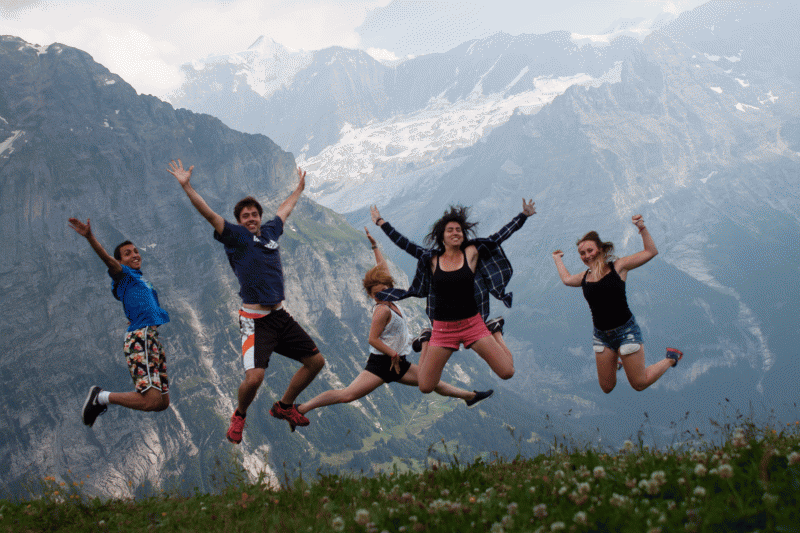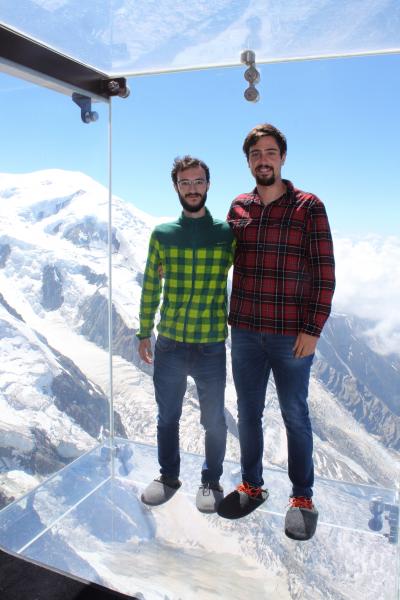As a physicist in my early career, I felt incredibly happy when I was informed last March that I was selected as a future participant of the highly selective and renowned Summer Student Programme at CERN. At that time, I already had worked within the ATLAS Collaboration for the scope of my Bachelor’s thesis, but I had never actually worked in situ.
After an almost eight-hour train ride I arrived in Geneva on the 24th of June in the afternoon. At the CERN entrance, I was given a provisional visitor’s pass to enter the Meyrin Site. I had already been at CERN for a short university field trip, but I immediately felt the charm of this historic place again when walking through the streets all named after famous physicists. I then checked the hostel, which was luckily in the immediate vicinity of the main restaurant R1 and all other relevant buildings. I met my new roommate Konstantin, a summer student from Bulgaria, who was doing his Bachelor’s thesis in nuclear physics and who would become one of my best friends during my experience at CERN.
On the following day, all summer students arriving that week were greeted in a Welcome Session inside the Globe of Science and Innovation. During a very nice breakfast, we got to know some of the other students and were provided with all the important organisational information. After having collected my CERN access card, some of us had lunch at R1. I enjoyed the food very much here as it was as international as the people working at CERN. Undoubtedly, the most frequently asked question during that day was “Where are you from?”, and you could almost certainly be sure not to get the same answer twice. Next, I met my supervisor Pedro in Building 40, arguably the most impressive building at CERN with its beautiful one-to-one maxi-poster of CMS in the central hall. Pedro showed me my workplace and introduced me to the topic I was going to work on for the coming months.
While at Göttingen, I was mainly involved in Higgs physics within the ATLAS collaboration. In turn, the aim of my project at CERN was to analyse data from Proton-Lead collisions collected by the CMS detector. These collisions allow to study the state of matter in the early-universe, namely the Quark Gluon Plasma and yet unexplained nuclear effects that are observed in respect to Proton-Proton collisions. More precisely, the goal of my project was to measure differential cross sections of the pPb → tt ̅ process, where two top quarks are created. As the top quark is the heaviest fundamental particle in the Standard Model, it makes this process particularly interesting to study. Due to the relatively low amount of pPb data collected at this point, differential cross section measurements require sophisticated statistical methods, which I was to apply to the previous analysis that observed the process for the first time in 2017.
While I very much enjoyed working on my project, the programme also included a thoroughly selected one-month lecture programme with speakers from across the globe. While they mainly focused on particle physics, other lectures included topics such as cosmology and medical physics. The lectures were usually followed by a Q&A session and a well-deserved lunch break. Furthermore, several interesting workshops as well as guided visits to the experiment sites were offered. I particularly enjoyed the visit to the Antiproton Decelerator, a unique machine to create and study the properties of antiatoms.
Apart from learning a lot from the lecture as well as from my project, my time at CERN was much more than that. Throughout the programme, we organised a lot of parties, Cheese Fondue gatherings at the prominent Buvette des Bains, BBQs at Parc Perle du Lac, hikes to Mont Salève and much more. The frequent table tennis matches I played with Karim and Konstantin were unforgettable as well as the World Cup matches, which a bunch of us enjoyed together in R1.
We had a spontaneous trip along Lake Geneva that included a wonderful boat trip as well as visits to beautiful cities such as Évian-les-Bains and Montreux, where we were witnesses of one of the most beautiful sunsets I can imagine.

Since we got along well, we set off together for the German-speaking part of Switzerland. With Konstantin, I also visited Lausanne and the thrilling glass room almost on the top of Mt. Blanc, the highest mountain in Europe.

On my last day at CERN, I was given the opportunity to present the result of my research to the CMS - Physics, Software & Computing group. To my delight, the performed measurements seemed very promising to the group and the results might even get published in a near future, which would certainly be an amazing reward for all the hard work.
All in all, my time at CERN was a once in a lifetime experience and probably the best summer in my life so far. I learned from the top experts in their particular field, met some of the brightest minds of our generation, but most importantly, I made some life-lasting friendships, which will always make me remember this incredible summer.
My summer student report: http://cds.cern.ch/record/263658
The views expressed in CMS blogs are personal views of the author and do not necessarily represent official views of the CMS collaboration.
